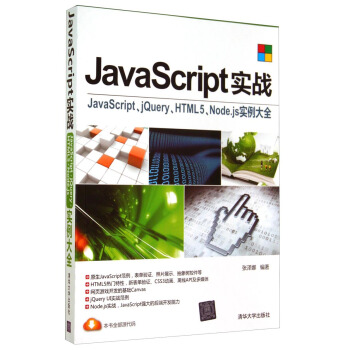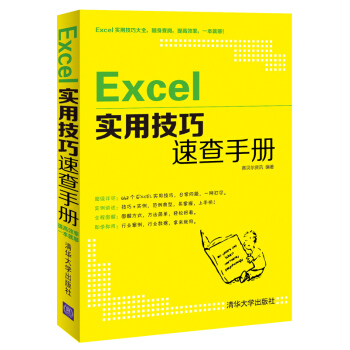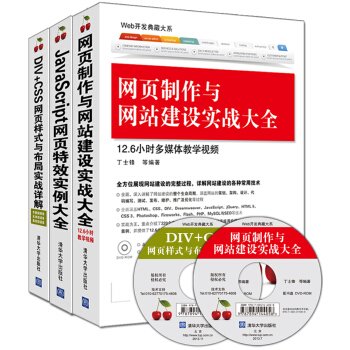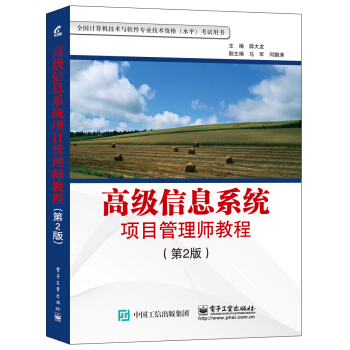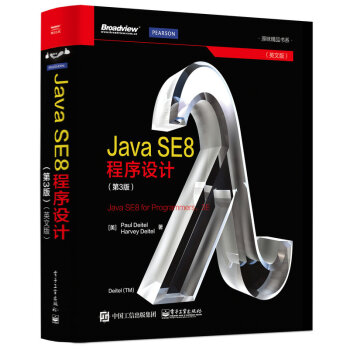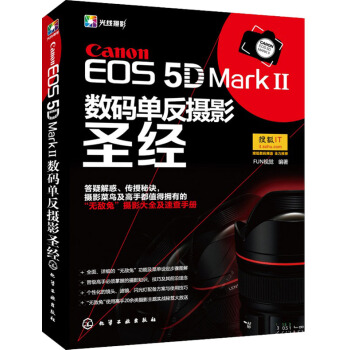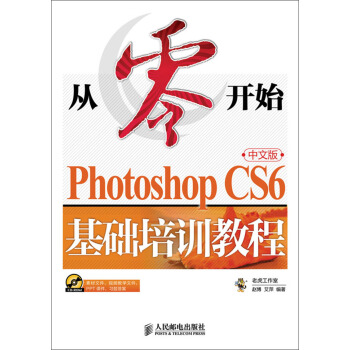![數字圖像處理(MATLAB版)(第2版)(英文版) [Digital Image Processing Using MATLAB(Second Edition)]](https://pic.tinynews.org/11245139/rBEQYFGmo0EIAAAAAANwbXIBWhcAACT4gH_MzwAA3CF442.jpg)

具體描述
編輯推薦
《數字圖像處理(MATLAB版)(第2版)(英文版)》是圖像處理基礎理論論述同以MATLAB為工具的軟件實踐方法相結閤的一本書,集成瞭岡薩雷斯和伍茲所著的《數字圖像處理(第三版)》一書中的重要內容和MathWorks公司的圖像處理工具箱。該版本包括重點術語的中文注釋。《數字圖像處理(MATLAB版)(第2版)(英文版)》的主要特色:
(1)自成體係,以工具書的風格書寫
(2)開發瞭100多個圖像處理函數,同時討論數字圖像處理主流算法和MATLAB函數
(3)涵蓋雷登變換、幾何變換、圖像配準、獨立與設備的彩色變換、針對視頻的壓縮函數;自適應閾值算法等
(4)部分代碼為MATLAB與C結閤使用
(5)書中包含GUI詳細設計
原書作者RafaelC.Gonzalez是數字圖像處理領域的人物,他在模式識彆、圖像處理和機器人領域編寫或與人閤著瞭100多篇技術文章、兩本書和4本教材。岡薩雷斯博士的著作已被世界1000多所大學和研究所采用,深受讀者喜愛。
內容簡介
《數字圖像處理(MATLAB版)(第2版)(英文版)》是圖像處理基礎理論論述同以MATLAB為主要工具的軟件實踐方法相對照的《數字圖像處理(MATLAB版)(第2版)(英文版)》。《數字圖像處理(MATLAB版)(第2版)(英文版)》集成瞭岡薩雷斯和伍茲所著的《數字圖像處理(第三版)》一書中重要的原文材料和MathWorks公司的圖像處理工具箱。《數字圖像處理(MATLAB版)(第2版)(英文版)》的特色在於重點強調怎樣通過開發新代碼來加強這些軟件工具。《數字圖像處理(MATLAB版)(第2版)(英文版)》在介紹MATLAB編程基礎知識之後,講述瞭圖像處理的主乾內容,包括灰度變換、綫性和非綫性空間濾波、頻率域濾波、圖像復原與重建、幾何變換和圖像配準、彩色圖像處理、小波、圖像壓縮、形態學圖像處理、圖像分割、區域和邊界錶示與描述。作者簡介
Rafael C.Gonzalez,於福羅裏達大學電子工程係獲得博士學位,田納西大學電氣和計算機工程係教授,田納西大學圖像和模式分析實驗室、機器人和計算機視覺實驗室的創始人及IEEE會士。岡薩雷斯博士在模式識彆、圖像處理和機器人領域編寫或與人閤著瞭100多篇技術文章兩本書和4本教材,他的書已被世界1000多所大學和研究所采用。目錄
ContentsPreface
Acknowledgements
About the Authors
1 Introduction
Preview
1.1 Background
1.2 What Is Digital Image Processing?
1.3 Background on MATLAB and the Image Processing Toolbox
1.4 Areas of Image Processing Covered in the Book
1.5 The Book Web Site
1.6 Notation
1.7 Fundamentals
1.7.1 The MATLAB Desktop
1.7.2 Using the MATLAB Editor/Debugger
1.7.3 Getting Help
1.7.4 Saving and Retrieving Work Session Data
1.7.5 Digital Image Representation
1.7.6 Image I/O and Display
1.7.7 Classes and Image Types
1.7.8 M-Function Programming
1.8 How References Are Organized in the Book
Summary
2 Intensity Transformations and Spatial Filtering
Preview
2.1 Background
2.2 Intensity Transformation Functions
2.2.1 Functions imadjust and stretchlim
2.2.2 Logarithmic and Contrast- Stretching Transformations
2.2.3 Specifying Arbitrary Intensity Transformations
2.2.4 Some Utility M-functions for Intensity Transformations
2.3 Histogram Processing and Function Plotting
2.3.1 Generating and Plotting Image Histograms
2.3.2 Histogram Equalization
2.3.3 Histogram Matching (Specification)
2.3.4 Function adapthisteq
2.4 Spatial Filtering
2.4.1 Linear Spatial Filtering
2.4.2 Nonlinear Spatial Filtering
2.5 Image Processing Toolbox Standard Spatial Filters
2.5.1 Linear Spatial Filters
2.5.2 Nonlinear Spatial Filters
2.6 Using Fuzzy Techniques for Intensity Transformations and Spatial
Filtering
2.6.1 Background
2.6.2 Introduction to Fuzzy Sets
2.6.3 Using Fuzzy Sets
2.6.4 A Set of Custom Fuzzy M-functions
2.6.5 Using Fuzzy Sets for Intensity Transformations
2.6.6 Using Fuzzy Sets for Spatial Filtering
Summary
3 Filtering in the Frequency Domain
Preview
3.1 The 2-D Discrete Fourier Transform
3.2 Computing and Visualizing the 2-D DFT in MATLAB
3.3 Filtering in the Frequency Domain
3.3.1 Fundamentals
3.3.2 Basic Steps in DFT Filtering
3.3.3 An M-function for Filtering in the Frequency Domain
3.4 Obtaining Frequency Domain Filters from Spatial Filters
3.5 Generating Filters Directly in the Frequency Domain
3.5.1 Creating Meshgrid Arrays for Use in Implementing Filters
in the Frequency Domain
3.5.2 Lowpass (Smoothing) Frequency Domain Filters
3.5.3 Wireframe and Surface Plotting
3.6 Highpass (Sharpening) Frequency Domain Filters
3.6.1 A Function for Highpass Filtering
3.6.2 High-Frequency Emphasis Filtering
3.7 Selective Filtering
3.7.1 Bandreject and Bandpass Filters
3.7.2 Notchreject and Notchpass Filters
Summary
4 Image Restoration and Reconstruction
Preview
4.1 A Model of the Image Degradation/Restoration Process
4.2 Noise Models
4.2.1 Adding Noise to Images with Function imnoise
4.2.2 Generating Spatial Random Noise with a Specified
Distribution
4.2.3 Periodic Noise
4.2.4 Estimating Noise Parameters
4.3 Restoration in the Presence of Noise Only-Spatial Filtering
4.3.1 Spatial Noise Filters
4.3.2 Adaptive Spatial Filters
4.4 Periodic Noise Reduction Using Frequency Domain Filtering
4.5 Modeling the Degradation Function
4.6 Direct Inverse Filtering
4.7 Wiener Filtering
4.8 Constrained Least Squares (Regularized) Filtering
4.9 Iterative Nonlinear Restoration Using the Lucy-Richardson
Algorithm
4.10 Blind Deconvolution
4.11 Image Reconstruction from Projections
4.11.1 Background
4.11.2 Parallel-Beam Projections and the Radon Transform
4.11.3 The Fourier Slice Theorem and Filtered Backprojections
4.11.4 Filter Implementation
4.11.5 Reconstruction Using Fan-Beam Filtered Backprojections
4.11.6 Function radon
4.11.7 Function iradon
4.11.8 Working with Fan-Beam Data
Summary
5 Geometric Transformations and Image
Registration
Preview
5.1 Transforming Points
5.2 Affine Transformations
5.3 Projective Transformations
5.4 Applying Geometric Transformations to Images
5.5 Image Coordinate Systems in MATLAB
5.5.1 Output Image Location
5.5.2 Controlling the Output Grid
5.6 Image Interpolation
5.6.1 Interpolation in Two Dimensions
5.6.2 Comparing Interpolation Methods
5.7 Image Registration
5.7.1 Registration Process
5.7.2 Manual Feature Selection and Matching Using cpselect
5.7.3 Inferring Transformation Parameters Using cp2tform
5.7.4 Visualizing Aligned Images
5.7.5 Area-Based Registration
5.7.6 Automatic Feature-Based Registration
Summary
6 Color Image Processing
Preview
6.1 Color Image Representation in MATLAB
6.1.1 RGB Images
6.1.2 Indexed Images
6.1.3 Functions for Manipulating RGB and Indexed Images
6.2 Converting Between Color Spaces
6.2.1 NTSC Color Space
6.2.2 The YCbCr Color Space
6.2.3 The HSV Color Space
6.2.4 The CMY and CMYK Color Spaces
6.2.5 The HSI Color Space
6.2.6 Device-Independent Color Spaces
6.3 The Basics of Color Image Processing
6.4 Color Transformations
6.5 Spatial Filtering of Color Images
6.5.1 Color Image Smoothing
6.5.2 Color Image Sharpening
6.6 Working Directly in RGB Vector Space
6.6.1 Color Edge Detection Using the Gradient
6.6.2 Image Segmentation in RGB Vector Space
Summary
7 Wavelets
Preview
7.1 Background
7.2 The Fast Wavelet Transform
7.2.1 FWTs Using the Wavelet Toolbox
7.2.2 FWTs without the Wavelet Toolbox
7.3 Working with Wavelet Decomposition Structures
7.3.1 Editing Wavelet Decomposition Coefficients without the
Wavelet Toolbox
7.3.2 Displaying Wavelet Decomposition Coefficients
7.4 The Inverse Fast Wavelet Transform
7.5 Wavelets in Image Processing
Summary
8 Image Compression
Preview
8.1 Background
8.2 Coding Redundancy
8.2.1 Huffman Codes
8.2.2 Huffman Encoding
8.2.3 Huffman Decoding
8.3 Spatial Redundancy
8.4 Irrelevant Information
8.5 JPEG Compression
8.5.1 JPEG
8.5.2 JPEG
8.6 Video Compression
8.6.1 MATLAB Image Sequences and Movies
8.6.2 Temporal Redundancy and Motion Compensation
Summary
9 Morphological Image Processing
Preview
9.1 Preliminaries
9.1.1 Some Basic Concepts from Set Theory
9.1.2 Binary Images, Sets, and Logical Operators
9.2 Dilation and Erosion
9.2.1 Dilation
9.2.2 Structuring Element Decomposition
9.2.3 The strel Function
9.2.4 Erosion
9.3 Combining Dilation and Erosion
9.3.1 Opening and Closing
9.3.2 The Hit-or-Miss Transformation
9.3.3 Using Lookup Tables
9.3.4 Function bwmorph
9.4 Labeling Connected Components
9.5 Morphological Reconstruction
9.5.1 Opening by Reconstruction
9.5.2 Filling Holes
9.5.3 Clearing Border Objects
9.6 Gray-Scale Morphology
9.6.1 Dilation and Erosion
9.6.2 Opening and Closing
9.6.3 Reconstruction
Summary
10 Image Segmentation
Preview
10.1 Point, Line, and Edge Detection
10.1.1 Point Detection
10.1.2 Line Detection
10.1.3 Edge Detection Using Function edge
10.2 Line Detection Using the Hough Transform
10.2.1 Background
10.2.2 Toolbox Hough Functions
10.3 Thresholding
10.3.1 Foundation
10.3.2 Basic Global Thresholding
10.3.3 Optimum Global Thresholding Using Otsu's Method
10.3.4 Using Image Smoothing to Improve Global Thresholding
10.3.5 Using Edges to Improve Global Thresholding
10.3.6 Variable Thresholding Based on Local Statistics
10.3.7 Image Thresholding Using Moving Averages
10.4 Region-Based Segmentation
10.4.1 Basic Formulation
10.4.2 Region Growing
10.4.3 Region Splitting and Merging
10.5 Segmentation Using the Watershed Transform
10.5.1 Watershed Segmentation Using the Distance Transform
10.5.2 Watershed Segmentation Using Gradients
10.5.3 Marker-Controlled Watershed Segmentation
Summary
11 Representation and Description
Preview
11.1 Background
11.1.1 Functions for Extracting Regions and Their Boundaries
11.1.2 Some Additional MATLAB and Toolbox Functions Used
in This Chapter
11.1.3 Some Basic Utility M-Functions
11.2 Representation
11.2.1 Chain Codes
11.2.2 Polygonal Approximations Using Minimum-Perimeter Polygons
11.2.3 Signatures
11.2.4 Boundary Segments
11.2.5 Skeletons
11.3 Boundary Descriptors
11.3.1 Some Simple Descriptors
11.3.2 Shape Numbers
11.3.3 Fourier Descriptors
11.3.4 Statistical Moments
11.3.5 Corners
11.4 Regional Descriptors
11.4.1 Function regionprops
11.4.2 Texture
11.4.3 Moment Invariants
11.5 Using Principal Components for Description
Summary
Appendix A M-Function Summary
Appendix B ICE and MATLAB Graphical User Interfaces
Appendix C Additional Custom M-functions
Bibliography
Index
……
前言/序言
PrefaceThis edition of Digital Image Processing Using MATLAB is a major revision of
the book. As in the previous edition, the focus of the book is based on the fact that solutions to problems in the field of digital image processing generally require extensive experimental work involving software simulation and testing with large sets of sample images. Although algorithm development typically is based on theoretical underpinnings, the actual implementation of these algorithms almost always requires parameter estimation and, frequently, algorithm revision and comparison of candidate solutions. Thus, selection of a flexible, comprehensive, and well-documented software development environment is a key factor that has important implications in the cost, development time, and portability of image processing solutions.
Despite its importance, surprisingly little has been written on this aspect of the field in the form of textbook material dealing with both theoretical principles and software implementation of digital image processing concepts. The first edition of this book was written in 2004 to meet just this need. This new edition of the book continues the same focus. Its main objective is to provide a foundation for implementing image processing algorithms using modern software tools. A complementary objective is that the book be self-contained and easily readable by individuals with a basic background in digital image processing, mathematical analysis, and computer programming, all at a level typical of that found in a junior/ senior curriculum in a technical discipline. Rudimentary knowledge of MATLAB also is desirable.
To achieve these objectives, we felt that two key ingredients were needed. The
first was to select image processing material that is representative of material covered in a formal course of instruction in this field. The second was to select software tools that are well supported and documented, and which have a wide range of applications in the "real" world.
To meet the first objective, most of the theoretical concepts in the following
chapters were selected from Digital Image Processing by Gonzalez and Woods,
which has been the choice introductory textbook used by educators all over the
world for over three decades. The software tools selected are from the MATLAB®
Image Processing Toolbox, which similarly occupies a position of eminence in
both education and industrial applications. A basic strategy followed in the preparation of the current edition was to continue providing a seamless integration of well-established theoretical concepts and their implementation using state-of-theart software tools.
The book is organized along the same lines as Digital Image Processing. In
this way, the reader has easy access to a more detailed treatment of all the image processing concepts discussed here, as well as an up-to-date set of references for further reading. Following this approach made it possible to present theoretical material in a succinct manner and thus we were able to maintain a focus on the software implementation aspects of image processing problem solutions. Because it works in the MATLAB computing environment, the Image Processing Toolbox offers some significant advantages, not only in the breadth of its computationalalgorithm development and experimental work.
After an introduction to the fundamentals of MATLAB functions and programming,
the book proceeds to address the mainstream areas of image processing.
The major areas covered include intensity transformations, fuzzy image processing, linear and nonlinear spatial filtering, the frequency domain filtering, image restoration and reconstruction, geometric transformations and image registration, color image processing, wavelets, image data compression, morphological image processing, image segmentation, region and boundary representation and description, and object recognition. This material is complemented by numerous illustrations of how to solve image processing problems using MATLAB and toolbox functions.
In cases where a function did not exist, a new function was written and documented as part of the instructional focus of the book. Over 120 new functions are included in the following chapters. These functions increase the scope of the Image Processing Toolbox by approximately 40% and also serve the important purpose of further illustrating how to implement new image processing software solutions.
The material is presented in textbook format, not as a software manual.
Although the book is self-contained, we have established a companion web site
(see Section 1.5) designed to provide support in a number of areas. For students following a formal course of study or individuals embarked on a program of self study, the site contains tutorials and reviews on background material, as well as projects and image databases, including all images in the book. For instructors, the site contains classroom presentation materials that include PowerPoint slides of all the images and graphics used in the book. Individuals already familiar with image processing and toolbox fundamentals will find the site a useful place for up-to-date references, new implementation techniques, and a host of other support material not easily found elsewhere. All purchasers of new books are eligible to download
executable files of all the new functions developed in the text at no cost.
As is true of most writing efforts of this nature, progress continues after work on the manuscript stops. For this reason, we devoted significant effort to the selection of material that we believe is fundamental, and whose value is likely to remain applicable in a rapidly evolving body of knowledge. We trust that readers of the book will benefit from this effort and thus find the material timely and useful in their work.
Rafael C. Gonzalez
Richard E. Woods
Steven L. Eddins
用戶評價
這本書的封麵設計相當有吸引力,一種沉靜的藍綠色調,配上銀色和白色的字體,給人一種專業而又不失現代感的感覺。當翻開第一頁,厚實的紙張和清晰的排版就讓人眼前一亮。我一直對圖像處理領域充滿好奇,但又擔心它過於理論化,難以入手。這本書的編排似乎考慮到瞭這一點,從基礎概念的介紹到具體的MATLAB實現,循序漸進,非常有條理。例如,在講到圖像的錶示方式時,書中不僅給齣瞭數學上的定義,還配上瞭直觀的圖示,讓我很快就理解瞭像素、灰度級等基本概念。特彆是書中引用的一些實際應用案例,比如醫學影像的分析,讓我看到瞭圖像處理的巨大潛力,也激發瞭我深入學習的興趣。雖然我還沒有深入到後麵的章節,但僅僅是前期的鋪墊,就讓我對這本書的品質有瞭很高的期待。它不僅僅是一本技術手冊,更像是一位經驗豐富的老師,耐心地引導著初學者一步步探索數字圖像的奧秘。
評分老實說,我一直在尋找一本能真正讓我“動手”起來的圖像處理書籍。市麵上很多書要麼是理論堆砌,要麼是代碼片段堆砌,很難找到一個平衡點。這本書在這方麵做得相當齣色。我特彆喜歡它將理論知識與MATLAB代碼緊密結閤的方式。不是那種生硬的“理論+代碼”的組閤,而是通過代碼來驗證和闡釋理論,讓抽象的概念變得觸手可及。舉個例子,在講解傅裏葉變換時,書裏不僅解釋瞭數學原理,還提供瞭相應的MATLAB代碼,讓我可以直接運行,觀察頻譜圖的變化,直觀地感受頻率域的特性。這種“邊學邊做”的學習方式,對於我這種實踐型學習者來說,簡直是福音。而且,書中給齣的代碼示例都非常清晰,注釋也很到位,即便是不太熟悉MATLAB的讀者,也能在一定程度上理解。我相信,通過這本書的學習,我不僅能掌握圖像處理的基本算法,還能熟練運用MATLAB進行實際操作,這對我未來的項目開發非常有幫助。
評分在選擇一本關於數字圖像處理的書籍時,我最看重的是其實用性和前沿性。這本書在這一點上做得非常到位。它不僅僅停留在經典的圖像處理算法上,而是融入瞭大量現代化的技術和應用。例如,在講解圖像分割時,書中就提及瞭一些基於深度學習的分割方法,雖然篇幅可能不會特彆長,但足以讓讀者瞭解到當前領域的發展趨勢。而且,它提供的MATLAB代碼示例,不僅僅是簡單的功能展示,很多都貼近實際應用場景,比如在圖像去噪和銳化方麵,都有很好的實踐指導意義。對於我這樣需要將所學知識應用於實際項目的人來說,這樣的內容非常寶貴。我能夠從中獲得靈感,並且快速將書中的方法應用到自己的工作中。這本書給我一種感覺,就是作者非常瞭解這個領域的研究動態,並且能夠將這些最新的知識有效地傳遞給讀者。
評分這本書的邏輯結構和內容深度都讓我感到驚喜。它並沒有試圖涵蓋圖像處理的所有細節,而是選擇瞭那些最核心、最重要、也是最常用的算法和技術進行深入講解。從圖像增強、復原,到特徵提取、分割,再到形態學處理和顔色空間轉換,每一部分的講解都邏輯清晰,層層遞進。我尤其欣賞它在講解每個算法時,都不僅僅是給齣一個公式或者一段代碼,而是會深入分析算法的原理、優缺點、適用場景,甚至還會提到一些可能遇到的問題和解決方法。這種“知其然,更知其所以然”的講解方式,讓我對圖像處理有瞭更深刻的理解,而不是停留在錶麵的操作層麵。書中齣現的那些例圖和圖示,也都非常精美,能夠有效地幫助理解復雜的概念。我甚至覺得,這本書可以作為圖像處理專業本科生或研究生的一本優秀的教材。
評分這本書的語言風格非常嚴謹,同時又不乏可讀性。作者在描述復雜的數學公式和算法時,能夠用清晰易懂的語言進行解釋,避免瞭晦澀難懂的專業術語堆砌。即使是對於初次接觸圖像處理的讀者,也能較容易地理解。我特彆喜歡書中對一些概念的類比和舉例,這讓抽象的理論變得更加生動和具象。例如,在解釋圖像濾波的原理時,書中用到瞭“在一個窗口內進行加權平均”這樣的描述,配以直觀的示意圖,讓我一下子就明白瞭它的作用。而且,這本書的排版也非常精美,字號大小適中,行距舒適,閱讀起來不會感到疲勞。章節之間的過渡也很自然,不會讓人感覺突兀。總的來說,這本書在內容的深度和廣度上都做得很好,並且在錶達方式上也非常人性化,是一本值得推薦的優秀技術書籍。
評分看起來比較難看起來比較難
評分不錯,可以看看,專業書籍
評分在京東買瞭好多書瞭,質量都還可以吧
評分努力學習中……
評分配閤MATLAB練習,很適閤作為入門教材
評分全英文 不錯 有挑戰
評分這本書的英文版我很喜歡,看著玩唄。感覺還不錯。
評分請至少填寫一件商品的評價
評分質量很好快遞給力 貨一個
相關圖書
本站所有内容均为互联网搜索引擎提供的公开搜索信息,本站不存储任何数据与内容,任何内容与数据均与本站无关,如有需要请联系相关搜索引擎包括但不限于百度,google,bing,sogou 等
© 2025 book.tinynews.org All Rights Reserved. 静思书屋 版权所有

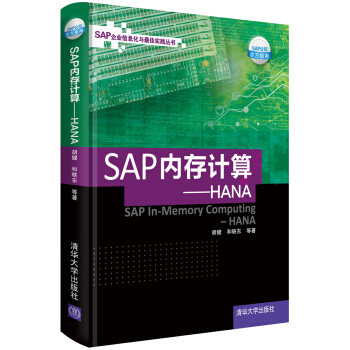
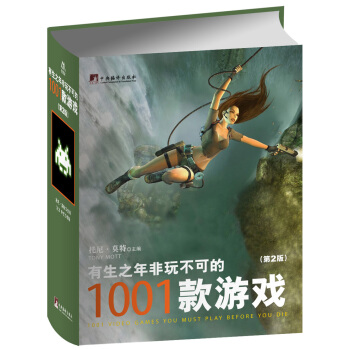

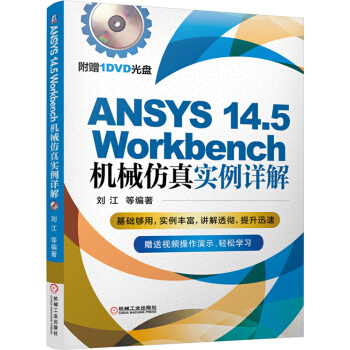
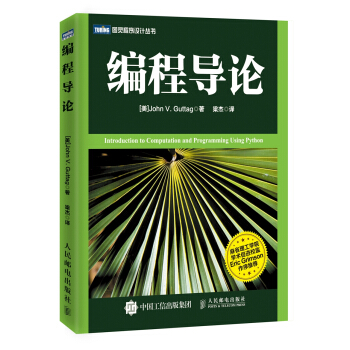
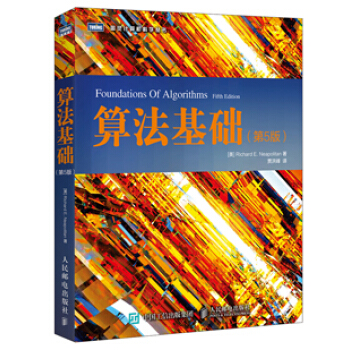
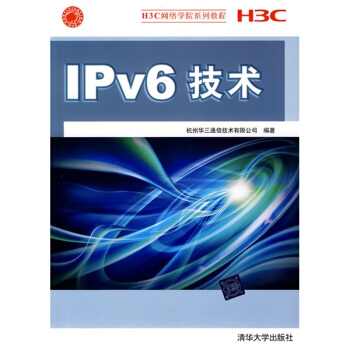

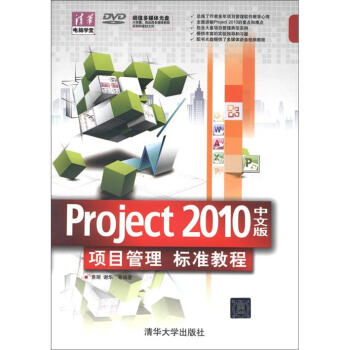
![圖解徠卡M9 [Leica M9] pdf epub mobi 電子書 下載](https://pic.tinynews.org/11178804/rBEQWFFCzh0IAAAAAATYRsxywyEAACKrANu7roABNhe230.jpg)
